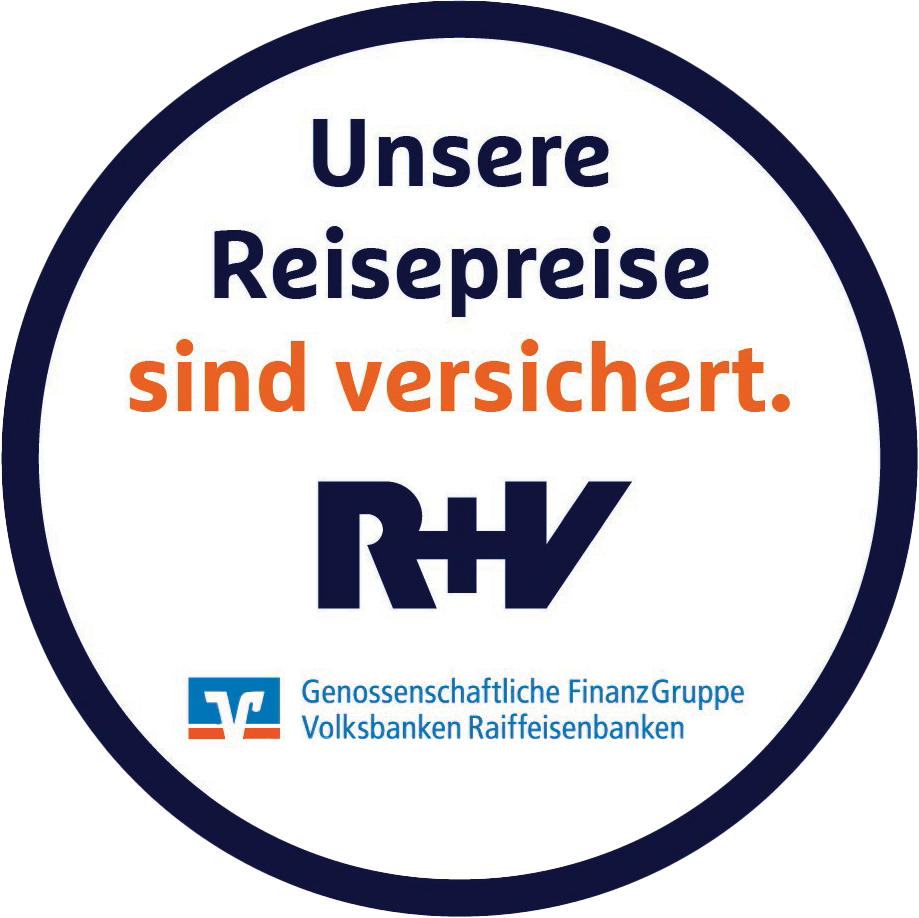Eine Reise, die es so bei uns noch nicht gab. 14500 km in 52 Tagen durch wunderschöne, abgelegene und beeindruckende Gegenden, die jedem Pauschaltouristen völlig unbekannt sind. Von Ulan Bator aus geht es zurück nach Tübingen über den Pamir Highway in Kirgistan und Tadschikistan, sowie die Seidenstraße. Das Kaspische Meer wird im Norden umfahren und dann geht es durch die Türkei über den Bosporus nach Europa.
Transkontinental Motorrad-Expedition's Reise
Alle Abenteuer begeisterten Motorradfahrer, die Lust auf anspruchsvolles Fahren, ferne Länder, interessante Menschen und fremde Kulturen haben sollten weiterlesen. Wichtig: Am 40. Tourtag ist offizielles Ende dieser Tour in Rustavi/Georgien. Von hier aus gibt es die Möglichkeit mit dem Flugzeug nach Hause zu fliegen oder aber auch den gemeinsamen Landweg mit unserem Tourguide anzugehen. Die Motorräder der Teilnehmer, die zurück fliegen, werden nach Hause transportiert.
.JPG)
Teamwork in der Mongolei
Reiseverlauf der Transkontinental Motorrad-Expeditions Reise:
Motorradreise Tag 1 bis 5: Von Ulan Bator an die Russische Grenze
Vier Tage lang fahren wir durch die westliche Mongolei an die Grenze Russlands. Es geht vorbei an schönen Seen, durch weite Steppen und über hohe Berge. Das ist die Gelegenheit, für alle die noch nicht in der Mongolei waren, diese beeindruckende Weite kennen zu lernen und für die, die schon bei der Hinfahrt dabei waren sich von ihr zu verabschieden.
Motorradreise Tag 6 bis 10: Russland und die ersten Kilometer in Kasachstan
Von der letztgroßen Stadt der Mongolei, Ölgii, geht es in den Norden an die Mongolisch-Russische Grenze. Nach unserem ersten, mit Sicherheit langwierigen Grenzübergang, fahren wir hinein in das Altai Gebirge, eines der schönsten Flecken der Erde. Nach den anstrengenden Offroad Passagen in der Mongolei genießen wir hier die ersten Asphaltkilometer in einem herrlichen und weitestgehend unbewohnten Tal. Je nachdem, ob unsere Fahrzeuge schon ein wenig Reparatur bedürftig sind oder noch gut in Form, werden wir die Altai Gegend genießen oder relativ zügig uns auf den Weg nach Barnaul begeben um unsere Motorräder zu richten.
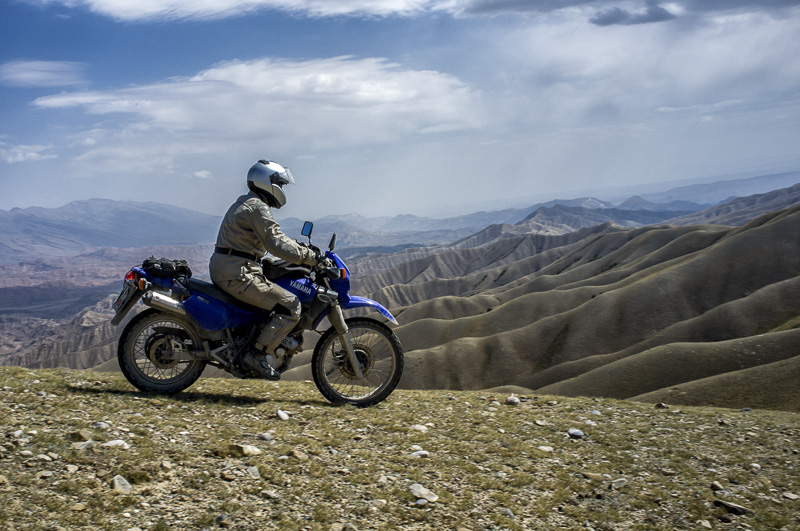
Mit dem Motorrad in den Bergen Kirgistans
Motorradreise Tag 11 bis 16: Durch Kasachstan nach Bishkek
Von Barnaul aus geht es weiter Richtung Süden nach Kasachstan. Uns erwartet ein recht korruptes Polizeiregime, welches manch eine Polizeikontrolle in die Länge ziehen wird. Entlang der Grenze zu China geht es für uns durch die ein oder andere Sandpassage als auch Löcher übersähte Straßen werden keine Seltenheit sein – es wird abenteuerlich! Wir durchqueren den Altyn-Emel-Nationalpark und schlafen im Sand der Singenden Düne. Wenn wir gut in der Zeit liegen, dann haben wir die Möglichkeit nochmal einen Abstecher weiter Richtung Westen zu unternehmen, einen der schönsten Flecke Kasachstan und falls nicht, dann geht es direkt an die Grenze zu Kirgistan. Wir erreichen Bishkek, die Hauptstadt und kulturellen Mittelpunkt des Landes. Die Stadt entstand aus einer Karawanenstadion an der Seidenstraße und steckt voller Kultur.
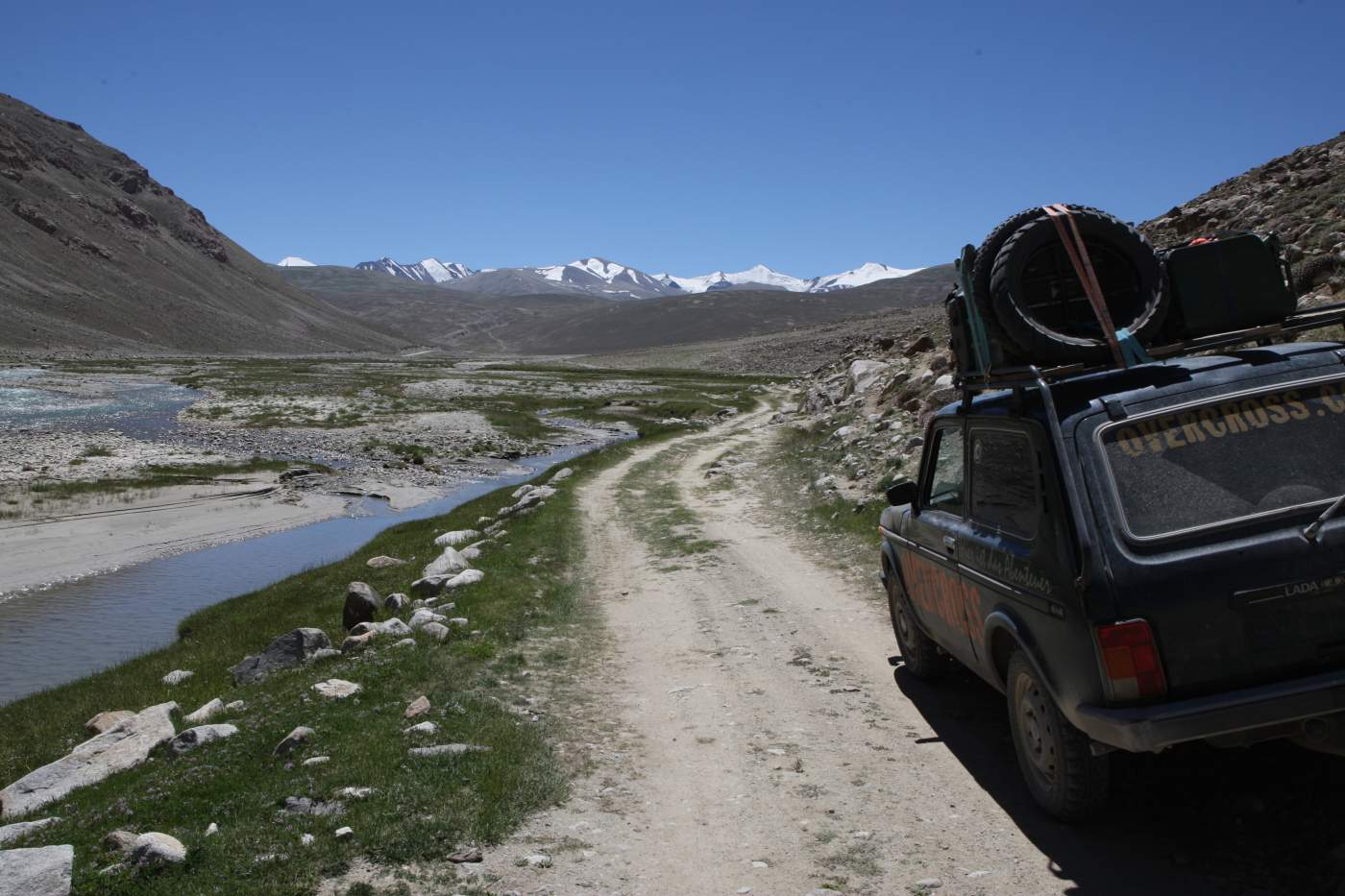
Transkontinental Tour 2015
Motorradreise Tag 17 bis 18: Von Bishkek weiter zur Motorrad Werkstatt in Osh
Nach dem wir Bishkek verlassen haben, geht es über drei Gebirgsketten nach Osh, welches angeblich 3000 Jahre alt ist. Dort haben wir Zeit unsere Motorräder in einer gut ausgerüsteten Werkstatt, die auch für unsere Kirgistan Motorrad Touren zuständig ist, überholen zu lassen.
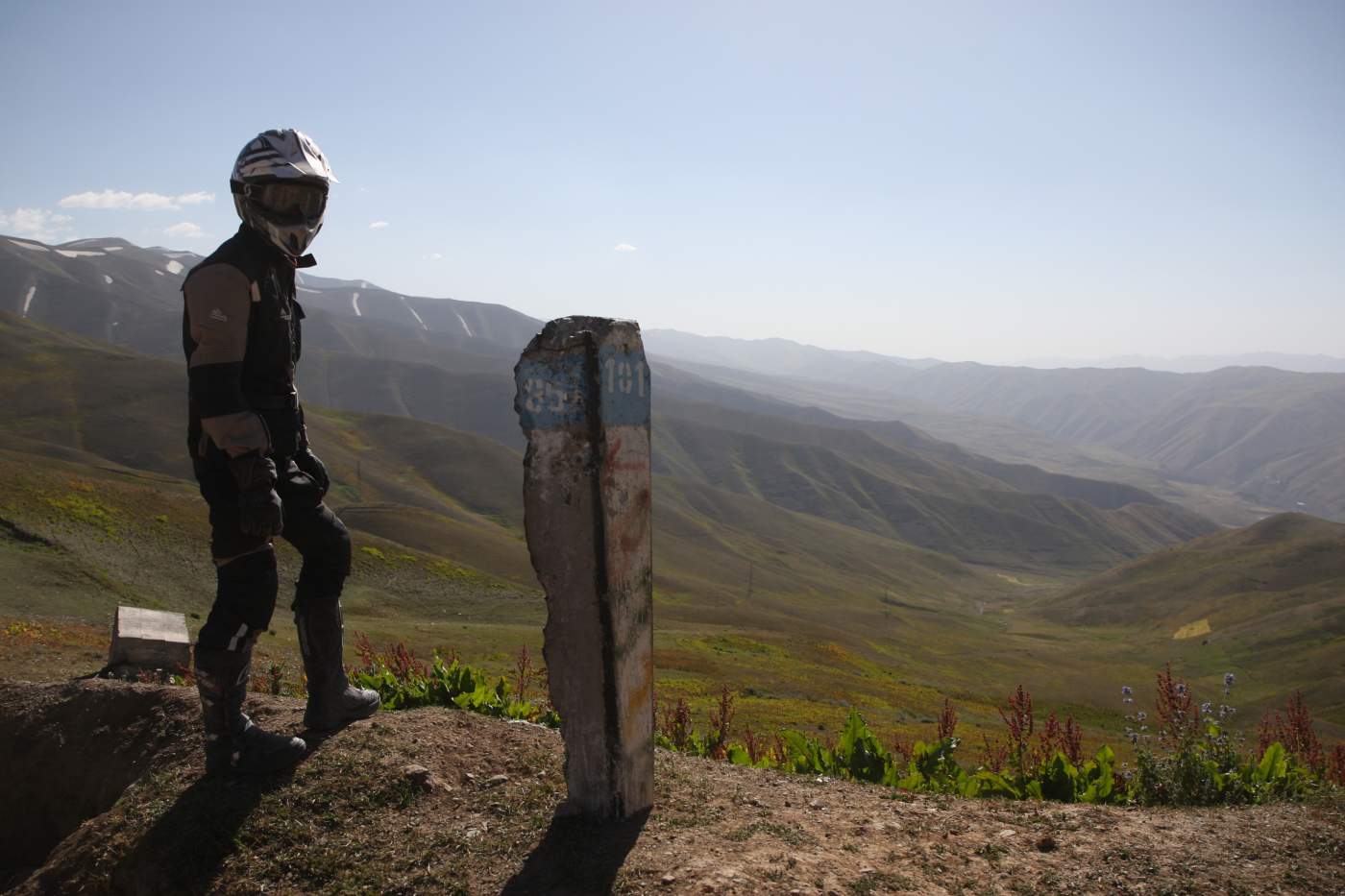
Traumhafte Landschaften in Kirgisien
Motorradreise Tag 19 bis 25: Mit dem Motorrad auf 4655 Meter
Von Osh aus geht es auf die legendäre M41. Den Pamir Highway, der von den Einheimischen auch einfach "Die Straße" genannt wird. Auch wenn es kleine Siedlungen entlang der Straße gibt, die sich nur mit der Instandhaltung beschäftigen, ist die Straße in einem schlechten Zustand und es fehlt immer wieder Asphalt oder Brücken. Durch Unwetter kann es auch immer wieder zur Sperrung von bestimmten Streckenabschnitten kommen – zerstörte Brücken, weggespülte Dörfer gehören in diesen Gefilden zur Jahresordnung. Aber bis zu diesem Zeitpunkt werden wir schon Spezialisten in Bezug auf Flussdurchfahrten sein und werden nicht ins kalte Gebirgswasser fallen – hoffentlich. Der Pamir Highway ist die zweithöchste Gebirgsstraße der Welt, bietet uns Pässe über 4000 Höhenmeter und endet in Dushanbe in Tadschikistan , eine imposante Stadt mit dem höchsten Fahnenmast der Welt.
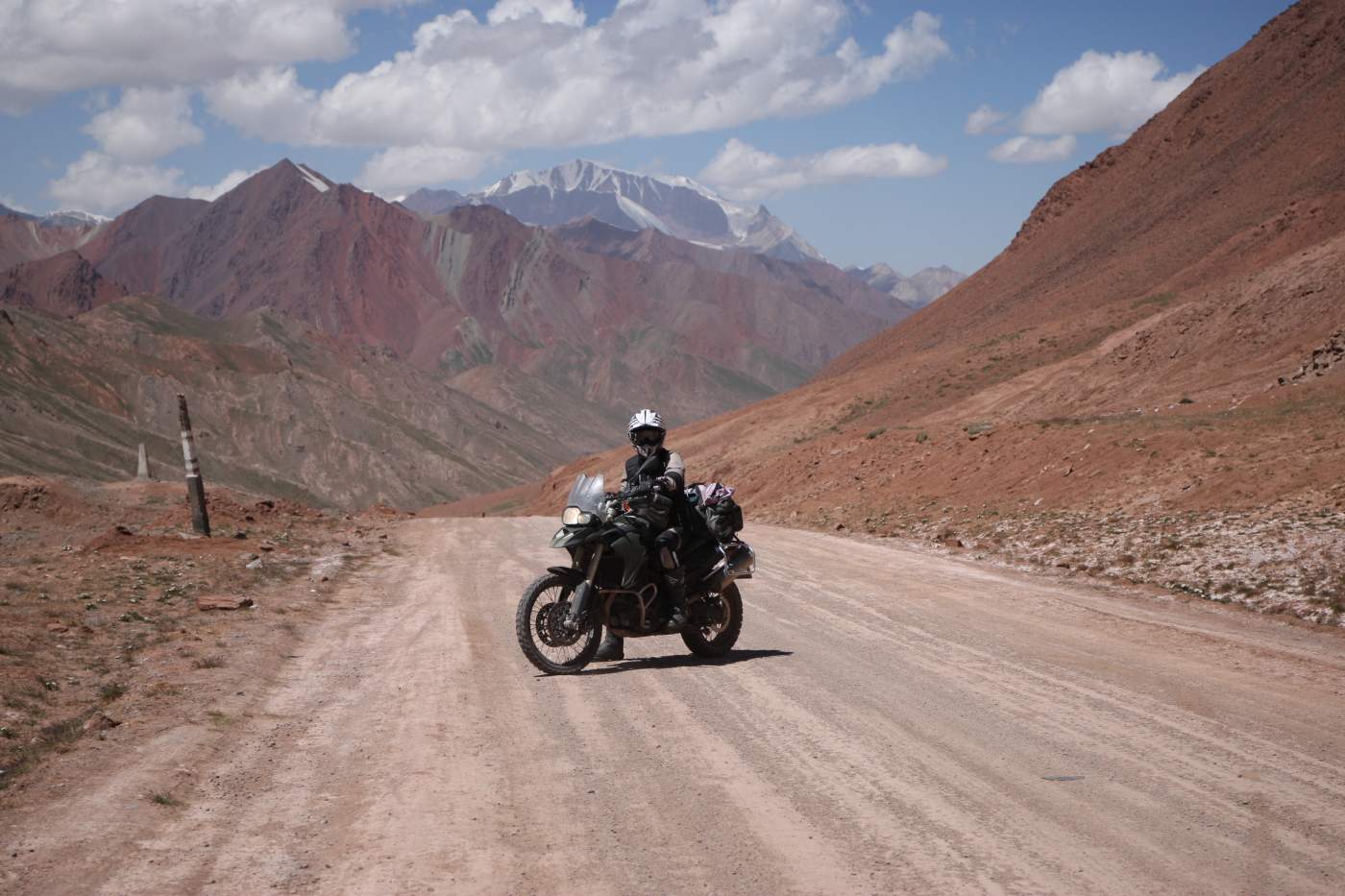
Unser Tourguide auf 4600m in Tadschikistan
Motorradreise Tag 26 bis 27: Nur ein kleiner Grenzübertritt und wenige Kilometer
Über den westlich gelegenen Grenzübergang von Dushanbe kommend geht es in eine der ältesten Königsstädte der Welt – Samarquand. Zum ersten Mal werden wir wieder auf große Ansammlungen von Touristen treffen. Die Innenstadt ist seit 2001 Weltkulturerbe und atemberaubend schön. Hier werden wir zwei Nächte bleiben, bevor es weiter nach Bukhara geht, zweites großes Highlight des Landes. Usbekistan ist einer der größten Herausforderungen unserer Reise. Es gibt kaum Geldautomaten, bezahlt wird mit Koffern voller Soʻm (Einheimische Währung) und wir bekommen nur Benzin mit 80er Oktanzahl – aber definitiv eine Reise wert!
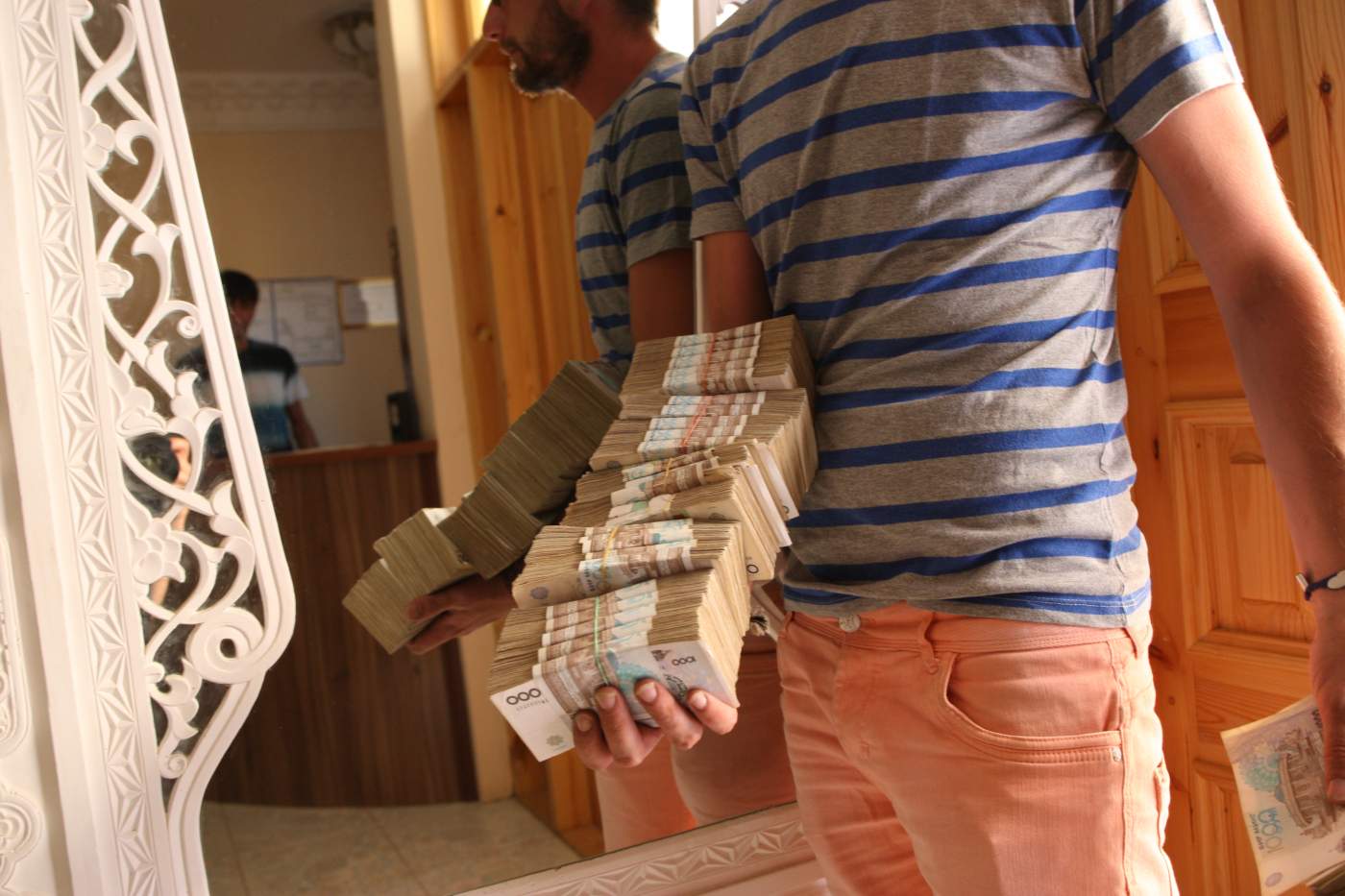
Bezahlt wird in Usbekistan mit Koffern voller Geld
Motorradreise Tag 28 bis 41: Von Samarkand ans Schwarze Meer
12 Tage lang geht es durch Usbekistan, am Aral See vorbei, noch einmal durch Kasachstan hindurch und am Kaspischen Meer in Russland vorbei. Obwohl wir nur wenige Kilometer davon entfernt vorbei fahren, das Kaspische Meer will sich einfach nicht zeigen lassen. Georgien empfängt uns mit wunderschönen, kurvenreichen Straßen und nach rund 150km sind wir schon am Endpunkt unserer Tour, Rustavi bei Tiflis, angelangt. Angekommen in Georgien wird eine gewaltige Strecke hinter uns liegen, die sicher jedem lange in Erinnerung bleibt. All die Teilnehmer, die von Tiflis zurück fliegen werden zum Flughafen gebracht und diejenigen, die auf dem Landweg Deutschland erreichen wollen, können sich gern am nächsten Tag mit unserem Supportfahrzeug auf den Heimweg begeben. Unser letzter Reisetag ist als Puffertag gedacht, falls unterwegs irgendwelche unvorhergesehenen Ereignisse auf uns zukommen.
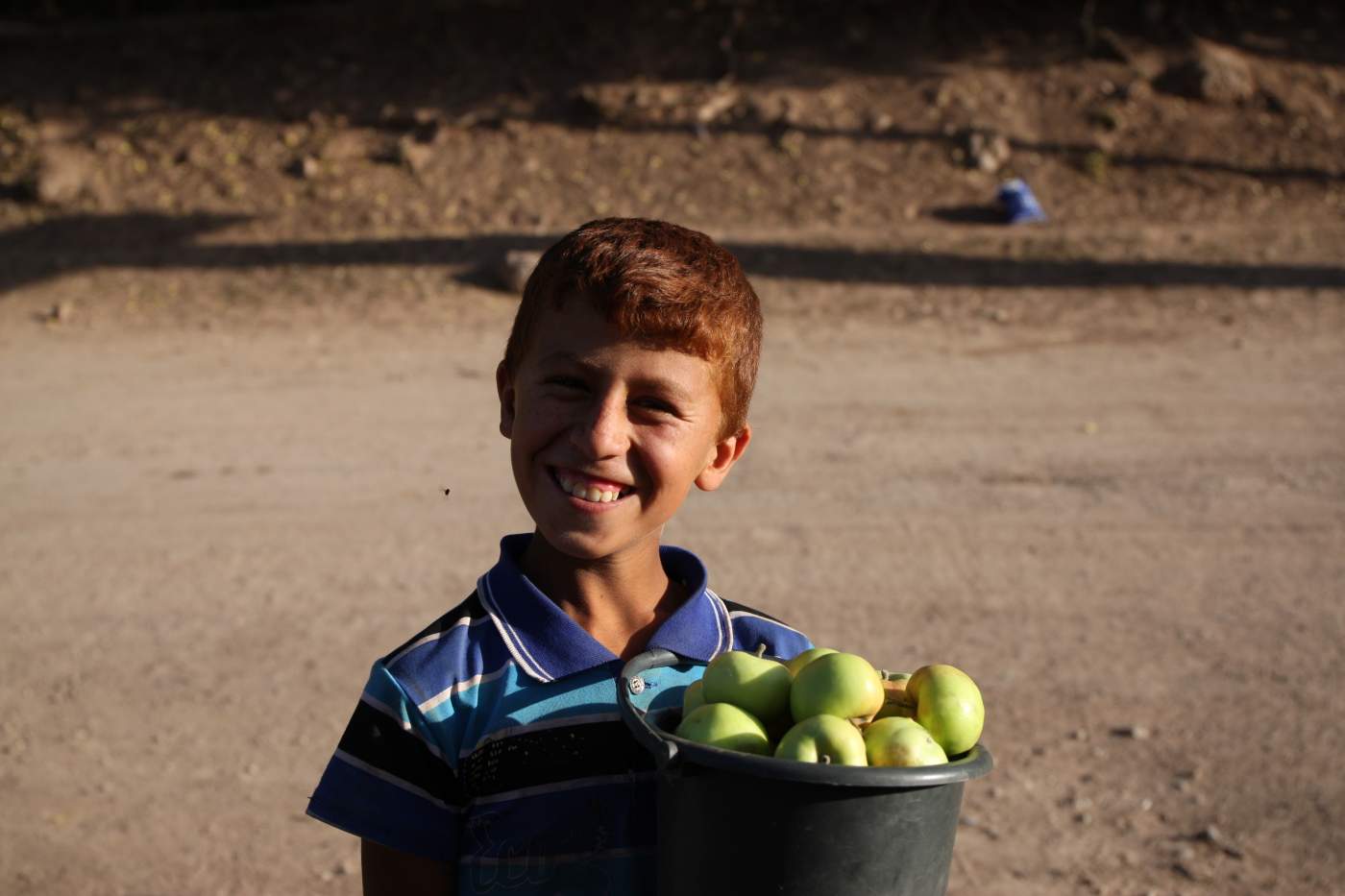
Junger Apfelverkäufer an der Grenze zu Kasachstan
Transferreise von Georgien, über Osteuropa zurück nach Deutschland
All diejenigen, die gern noch die letzten 5000km auf ihrer eigenen Maschine zurück legen wollen, können sich gern dem Supportfahrzeug anschließen. In 10 Tagen geht es dann für unsere Guides über die Türkei, Bulgarien, Serbien, Bosnien-Herzegovina, Kroatien, Slowenien und Österreich nach Tübingen. Da heißt es aber Kilometer machen um rechtzeitig auf unserer Willkommensparty da zu sein ;)
*** die Reise wird zum zweiten Mal in dieser Form als reine Motorrad-Expedition für "Long Distance" Fahrer durchgeführt!
Schlusswort:
Diese Motorradreise ist eine Expedition an welcher wir NEUE Strecken befahren und jedes Jahr neue Strecken erkunden! WICHTIG für jeden Teilnehmer der das Abenteuer sucht! Diese Expedition ist etwas für Motorradfahrer, die sich JEDEN Tag auf neue Herausforderungen einlassen können, selbständig denken, handeln und vor allem lange Strecken on und Off Road fahren können. Diese Reise ist NICHTS für Motorradfahrer, welche eine organisierte Pauschalreise mit einem Motorradguide vorweg sucht, der auf enventuelle Schlaglöcher on wie off Road aufmerksam macht!
